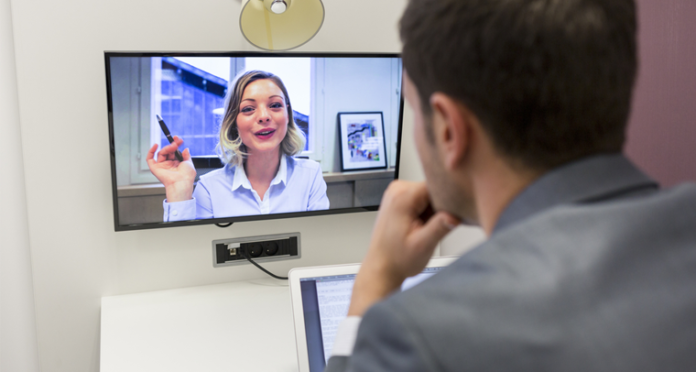By John Pletsch
We all are striving to adapt during this time of self-quarantine. We’re discovering how to nurture relationships with people we can no longer see in person. For many of us, we are working remotely for the first time and navigating how to conduct our business virtually.
Although I never imagined a career in front of a camera, it’s now essential to be able to display strength and capability in front of one. When you’re in a virtual meeting—whether with a client, a teammate, or vendor—the way you present yourself and your environment speak as loud as your words. So, how do we project a professional image while we’re only a talking head on the screen?
Last weekend, creative advisor Ted Leonhardt (and a regular contributor to his website) hosted an online discussion about putting forth our best business selves in today’s purely virtual world. I came away with some practical tips that I tried out with success! Perhaps you’ll find them helpful, too.
1. Do a test run. Even if you are familiar with video conferencing, different platforms—Zoom, Slack, Teams, and everything in between—have different functionalities. Be sure you know how to share screens, send files and upload images if need be.
2. Check your microphone and camera before a meeting starts. One approach is to connect with a friend who uses the same conferencing platform and have them screen capture your image and send it back to you. Use this to adjust lighting or camera placement. To increase fidelity, you may consider hardwiring a single-lens reflex (SLR) camera into your computer or upgrading your microphone. There are plenty of USB external microphones that can stay out of frame but provide better sound than the internal mic on a laptop.
3. Align the camera on a horizontal plane with your eyes and look at the camera (not the screen) when you’re talking. If your camera is too high, it seems you are staring at the sky; too low, and you are looking down on your audience. The goal is to appear like you’re sitting across from someone, so it feels as natural as possible. If you don’t have a computer stand, place your laptop on a box or stack of books.
4. Curate what is behind you and what the camera sees. The best backdrop is clean and simple. Maybe highlight with a few elements of interest that say something about you—a bookshelf, a piece of art—but nothing too distracting. If you don’t have a work-appropriate space, select your own backdrop. In Zoom, you can change your background screen to any photo you wish. In Teams, you can blur the background.
5. Select flattering light. Similar to how you are lit in a photo studio, the objective is to create the finest visual image possible. This is easily done by having some sort of light falling on you from the front. At home, you can achieve this by facing a window with daylight streaming in. You also can put a soft light on your desk to illuminate your face.
6. Color-balance the light. Use lighting that most matches natural, flat light for consistency of color through the entire frame. To replicate natural light, opt to replace your current lightbulb with a daylight bulb, generally 5,000K-5,500K (as measured in Kelvin), and found in any hardware store.
7. Dress the part. Shower, comb your hair and put on work clothes. This affects how you speak and interact. Wear a shirt that stands out, possibly with a pop of color, if that suits you. You want to contrast with your background. Sit up straight with shoulders back and keep both feet on the floor to improve your posture.
8. Turn off your notifications and do not multi-task. Give the speaker your full attention, it’s one of the only gifts we can offer at this point.
9. Breathe. Breathe deeply several times before the call begins. Relax, we are all learning this together.
The last one—mindful breathing—is particularly important. We need to remember to practice self-care during this time. Do what you can to feel more in balance. Seek out and soak in moments of beauty and hope. The cherry blossoms are in bloom.
John Pletsch is the founder and owner of Electric Pen, a Seattle graphic-design agency. Also see electricpen.com.














